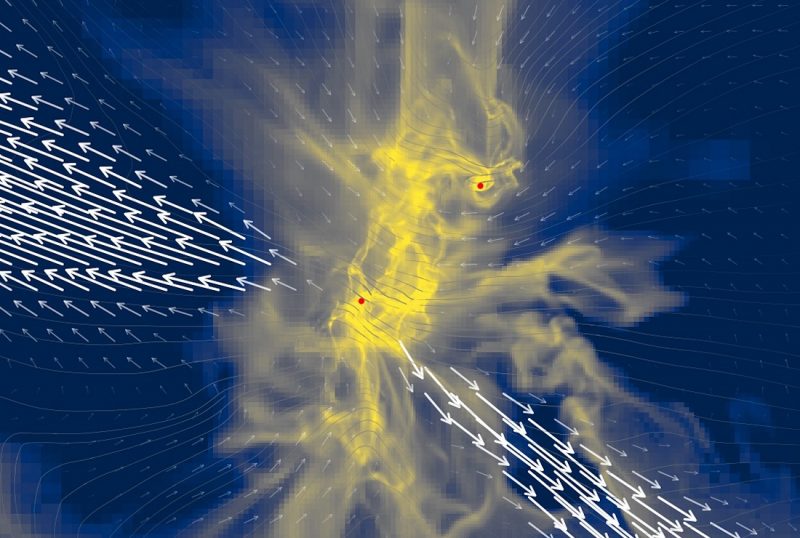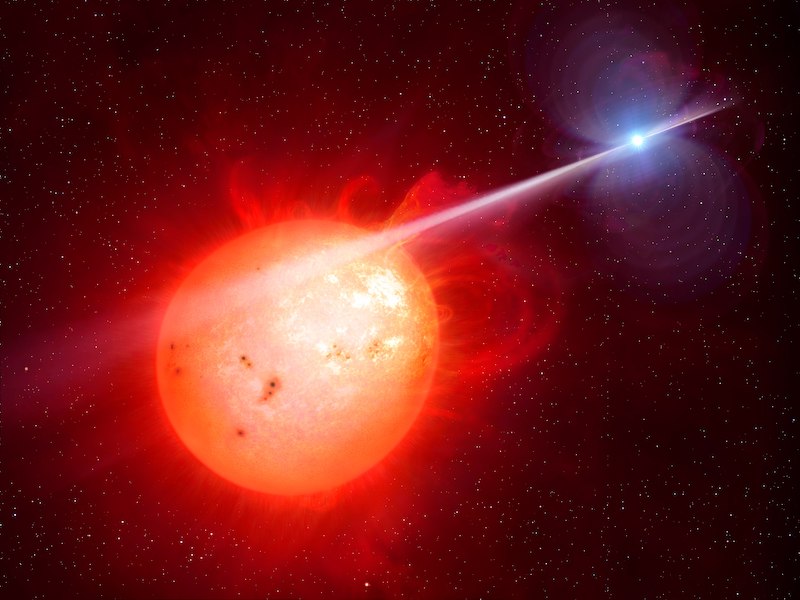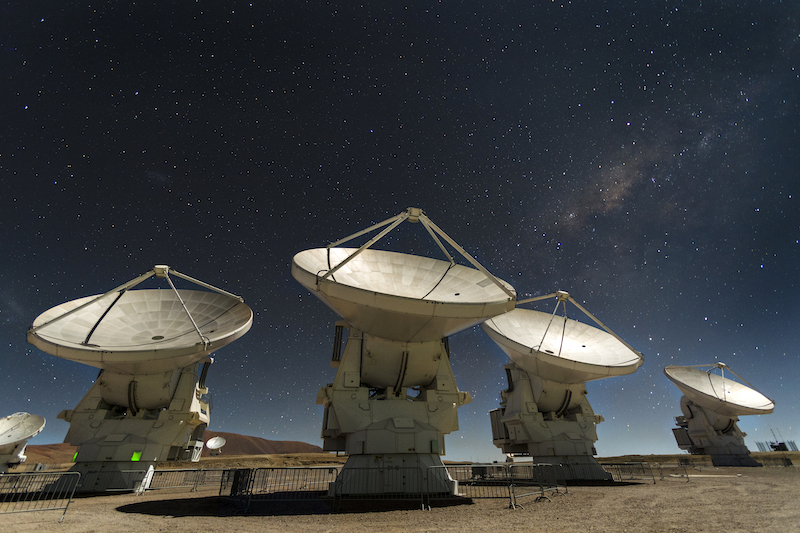
The only planet we know to have life – Earth – orbits a single star, our sun. So it’s reasonable to assume the best places to look for alien life are planets orbiting single sunlike stars. But most Milky Way stars (85%) aren’t solitary. Many come in binary pairs, two stars orbiting a common center of gravity. Can planets orbiting two stars harbor life? The possibility brings to mind the fictional world of Tatooine, a hot desert planet orbiting a pair of binary stars in the epic space opera Star Wars.
On May 23, 2022, astronomers at the University of Copenhagen, Denmark, suggested that planets with two suns might be quite different from Earth. Astronomers don’t know how being in a binary star system affects potential habitability. But it’s clear such systems provide conditions for life unlike any seen in our solar system.
Their study – published in the peer-reviewed journal Nature – explores binary-star planets. It discusses new observations from the Atacama Large Millimeter/submillimeter Array (ALMA) telescope in Chile. For this study, ALMA observed a young binary star system called NGC 1333-IRAS2A, located some 1,000 light-years from Earth.
Binary-star planets
Scientists used to think that the best place to search for alien life was on planets around single, sun-like stars. That may still be true to some degree, but now they are finding that habitable conditions may exist in a variety of star systems. Rocky, Earth-sized planets are even being found in the habitable zones of red dwarfs – stars smaller and cooler than our sun – for example. The habitable zone is the region around a star where temperatures could allow liquid water to exist on a planet or moon.
A growing number of discoveries are of exoplanets in binary star systems, that is, not only in single star systems. These discoveries show that planets are common, around all different kinds of stars.
Watch a video simulation of NGC 1333-IRAS2A below:
In addition, new technology and instruments are allowing astronomers to take a closer look at some of these worlds. The lead author of the new study, Jes Kristian Jørgensen, at the Niels Bohr Institute, University of Copenhagen, noted:
The result is exciting since the search for extraterrestrial life will be equipped with several new, extremely powerful instruments within the coming years. This enhances the significance of understanding how planets are formed around different types of stars. Such results may pinpoint places which would be especially interesting to probe for the existence of life.
Bursts of gas and dust
NGC 1333-IRAS2A is a very young binary star system – only about 10,000 years old – still surrounded by a disk of gas and dust. Co-author Rajika Kuruwita at the Niels Bohr Institute said:
The observations allow us to zoom in on the stars and study how dust and gas move toward the disk. The simulations will tell us which physics are at play, and how the stars have evolved up till the snapshot we observe, and their future evolution.
The researchers noticed that the movement of gas and dust wasn’t always continuous. Sometimes – in periods lasting 10 to 100 years, occurring every 1000 years – there are “bursts” of activity. At those times, the binary star becomes 10 to 100 times brighter than normal. The scientists say this pattern is caused by the duality of the binary star. The two stars circle each other, around a common point of gravity. As they do, their combined gravitational pull causes large amounts of gas and dust to fall inward, toward the stars. Kuruwita explained:
The falling material will trigger a significant heating. The heat will make the star much brighter than usual. These bursts will tear the gas and dust disc apart. While the disk will build up again, the bursts may still influence the structure of the later planetary system.


Other planets and comets
The bursts are important observations, even though the system is still much too young for planets to have formed. However, the researchers want to study other planetary systems, to compare the results with NGC 1333-IRAS2A.
In addition, the researchers want to observe other exocomets. Like exoplanets, these are comets orbiting other stars. In our own solar system, it is thought that comets may have brought the molecular building blocks of life to ancient Earth. Might the same happen in other solar systems as well? Jørgensen said:
Comets are likely to play a key role in creating possibilities for life to evolve. Comets often have a high content of ice with presence of organic molecules. It can well be imagined that the organic molecules are preserved in comets during epochs where a planet is barren, and that later, comet impacts will introduce the molecules to the planet’s surface.
The heating caused by the bursts will trigger evaporation of dust grains and the ice surrounding them. This may alter the chemical composition of the material from which planets are formed.
The wavelengths covered by ALMA allow us to see quite complex organic molecules, so molecules with 9-12 atoms and containing carbon. Such molecules can be building blocks for more complex molecules, which are key to life as we know it. For example, amino acids, which have been found in comets.
Webb observations of binary-star planets
The ALMA observations are a great step forward in understanding how planetary systems can form. Not only around binary stars, but for stars in general as well. Soon, NASA’s Webb telescope will also be exploring the universe, and will be able to take an even closer look at binary star systems such as NGC 1333-IRAS2A.
For systems that do have planets, Webb can analyze the atmospheres of some of them, searching for possible biosignatures. Those are gases like oxygen, nitrogen, carbon dioxide or methane that might be evidence for life.
ELT and SKA
The ELT (European Large Telescope) and the powerful SKA (Square Kilometer Array) will also join the Webb. Both telescopes are planned to begin observing toward the end of this decade. ELT, in particular, will be able to study the atmospheres of exoplanets.


Jørgensen said:
The SKA will allow for observing large organic molecules directly. The James Webb Space Telescope operates in the infrared which is especially well suited for observing molecules in ice. Finally, we continue to have ALMA which is especially well suited for observing molecules in gas form. Combining the different sources will provide a wealth of exciting results.
Indeed, the next months and several years will be exciting for exoplanet research. The ALMA telescopes are already providing valuable new insights into binary star systems and exoplanets. That will continue with Webb, ELT, SKA and others. What will they find?
Bottom line: A new study examines whether binary-star planets – in solar systems very different from our own – could support life. Such worlds might be good targets in the search for evidence of alien biology.
Source: Binarity of a protostar affects the evolution of the disk and planets
The post Can binary-star planets support life? first appeared on EarthSky.
0 Commentaires